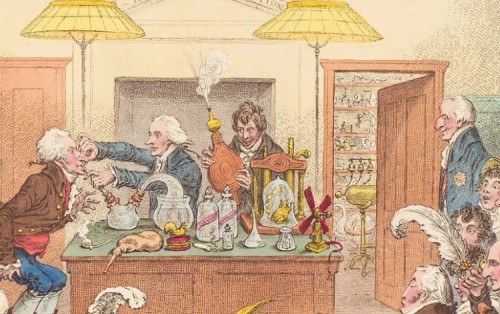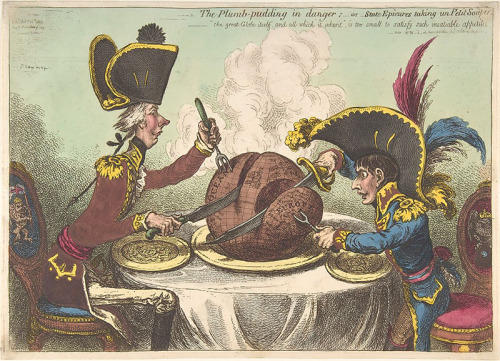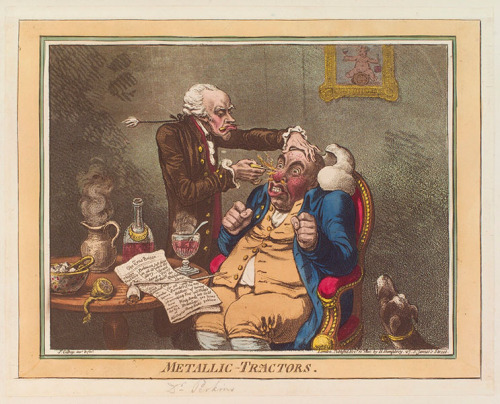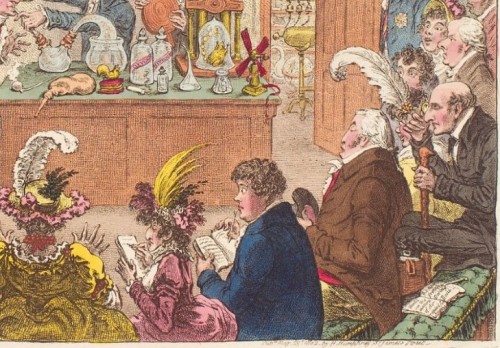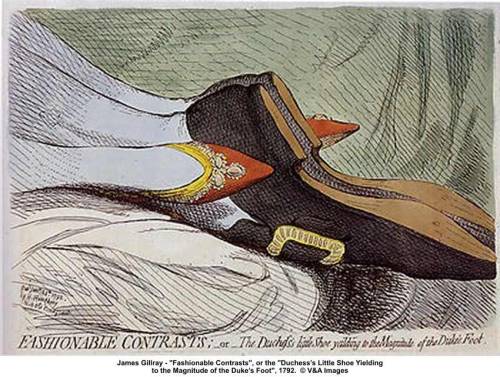#james gillray
James Gillray – Scientist of the Day
James Gillray, a British caricaturist and etcher, died June 1, 1815, at age 58.
Post link
Fashionable Contrasts or The Duchess’s little shoe yielding to the magnitude of the Duke’s foot - James Gillray
Post link

Without getting into too much detail (because this is another post with babble potential), I’d like to touch upon the imagery of Charlotte Corday, who definitely wins the prize for “Most Spartan” Frenchwoman, but I’d like to look at it from the English perspective. To review, Charlotte was the broad who took matters into her own hand when the executions in the French Revolution became too numerous. Placing blame on Jean-Paul Marat for the out of control killing sprees, Charlotte assassinated Marat with a butter knife in his bathtub. Well, maybe not a butter knife, but she she did buy a kitchen knife right beforehand to do the job. She was, of course, punished with the original execution of death by guillotine.

This, of course, made her a martyr. The French despised her for her actions. A man even lifted her freshly severed head from the guillotine basket to slap her cheek. The English, on the other hand, idolized the murderess. As can be seen in this Gillray print, Corday is one of the few women to be portrayed in a positive light by the satirical artist. Her depiction is very similar to those of Britannia, a rare compliment for those not of English origin. Don’t you just love how in this depiction, Charlotte address the assembly as “wretches”? Plus, I doubt Gillray ever put so much time into making a hairdo look nice as he did with this print. It should also be noted how incredibly un-French Charlotte looks. She looks more… hmm… British? Her depiction is notably in the British vogue.
The British, who have a tradition of enjoying a good rebellion (unless it is against them), felt France crossed the line with the execution of Louis XVI. Charlotte became, for them, a symbol of liberty, the exact thing France was fighting for. The French disagreed with this viewpoint and felt it was Marat, the guy who died taking a bubble bath, who was the true martyr.
Source: http://georgianaduchessofdevonshire.blogspot.com/2008/05/gossip-from-france-charlotte-corday.html

This print is pretty self-explanatory. Regency gowns simply don’t flatter every figure.
Compare Gillray’s take on the new fashions of the late 1790s with Boilly’s, where a dedicated follower of fashion (a merveilleuse) is mistaken for a prostitute because of the general skimpiness of her attire.

In the 1790s, fashion took a complete 180 from the poufs and panniers associated with Marie Antoinette. The French Republic wished to complete change French culture, and what better medium than fashion? Since the National Assembly wanted to build a republic the likes of which had only been found in ancient Rome, tailors and dressmakers took their cues from ancient Roman statues, which meant high waists; long, trailing drapery; and simpler, curlier hairstyles.Since the French set the fashion, England followed, even though for most of the period when empire waist dresses were popular, England and France were engaged in a series of long and vicious wars against each other.
Fashion, apparently, is the one import that continues despite naval blockades and Russian winters.
Source: http://gillraysprintshop.blogspot.com/2009/01/following-fashions.html

